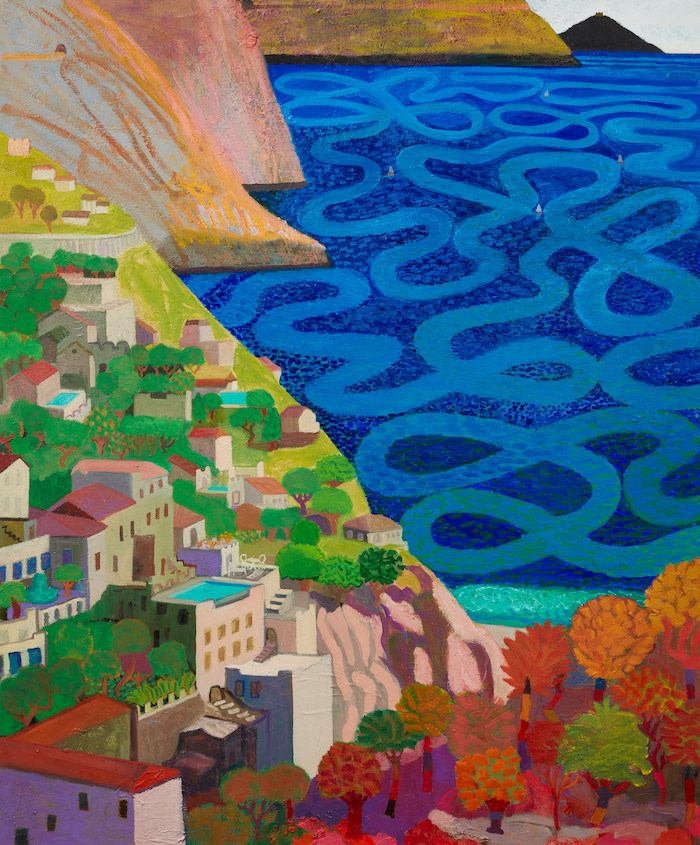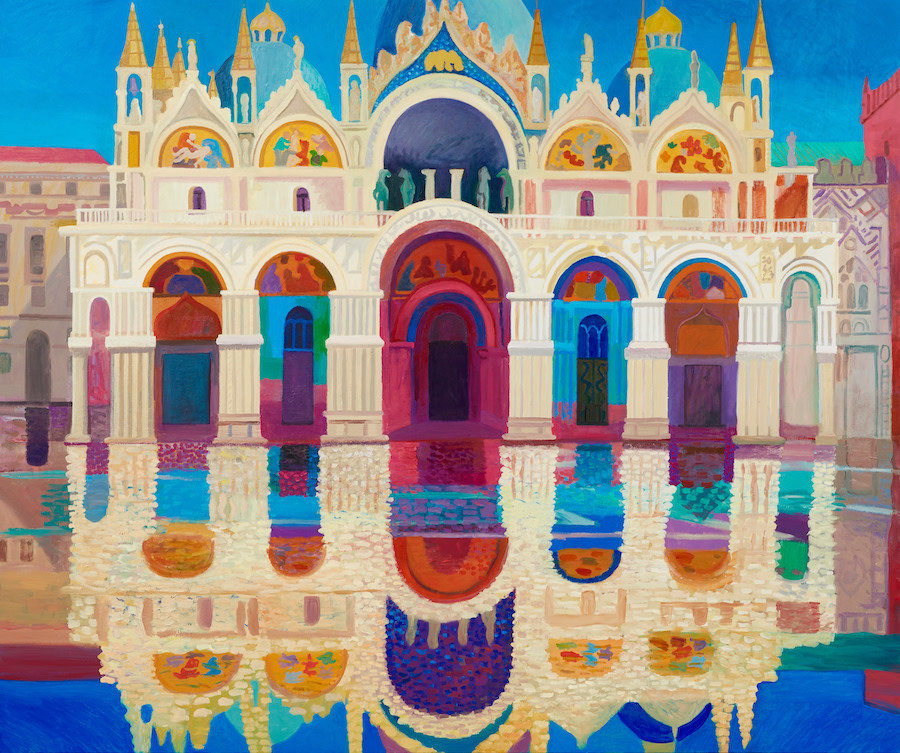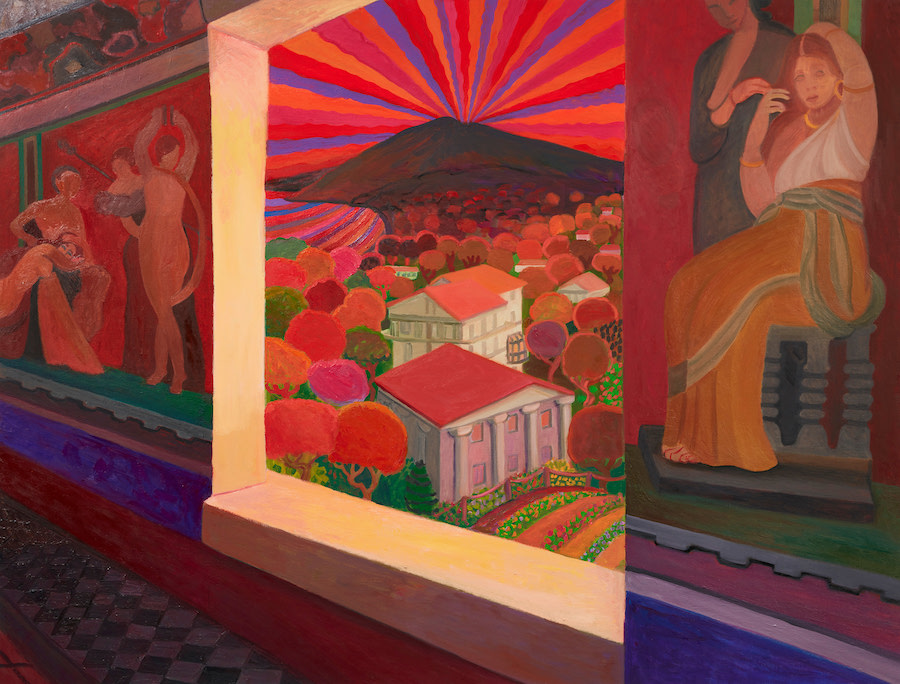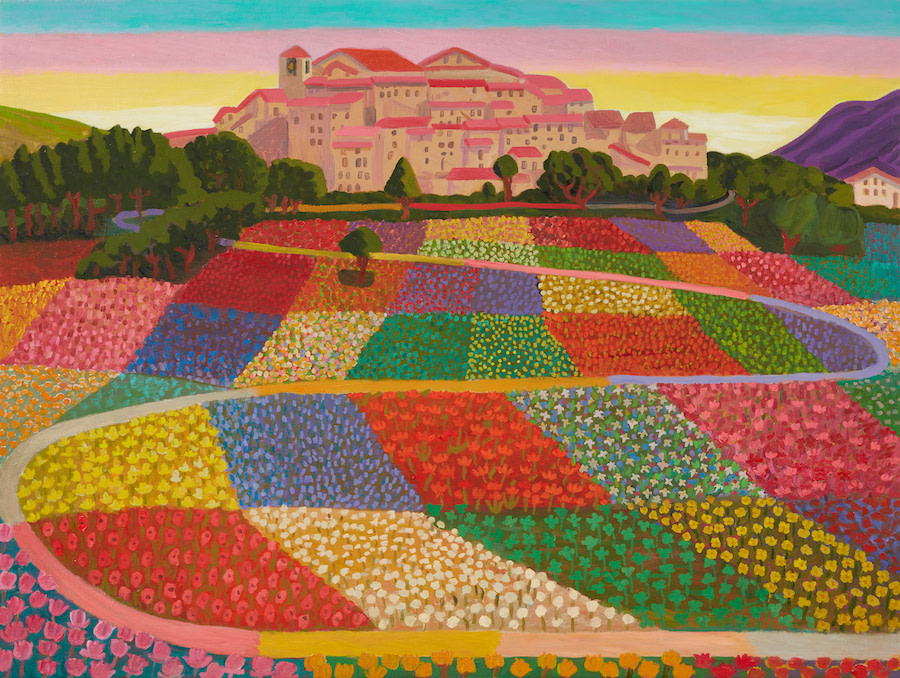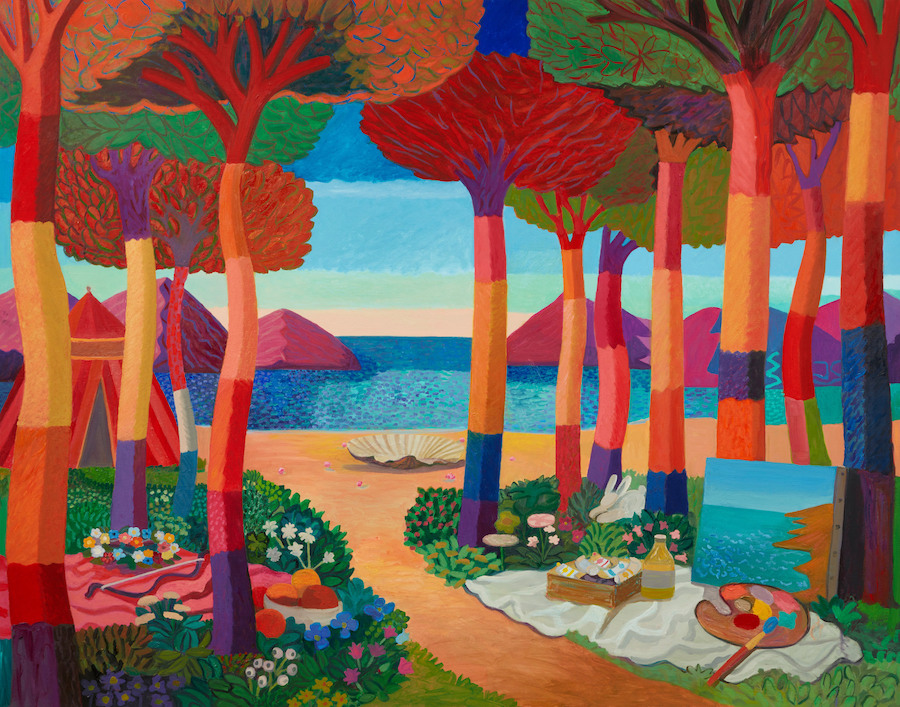Acquavella presents Daniel Heidkamp’s first solo exhibition at the gallery, Tempo, featuring a new body of paintings that originate from the artist’s travels to Italy. Heidkamp’s richly colored, imaginative scenes are rooted in his ongoing explorations and deconstructions of art historical traditions and the genre of landscape painting. The show is on view through April 9, 2023, at Acquavella’s Palm Beach location.
Heidkamp travels extensively to source the inspiration for his paintings, from varied locations such as the south of France to Hudson, New York. To create his works, the artist begins by seeking out locales that are viewed as centers for artistic production and have drawn in artists to create work for centuries. In Tempo, Heidkamp’s newest body of work comes from his travels in 2022 throughout Italy, communing with a rich history of art ranging across the Renaissance, the Baroque, and Ancient Rome. Working from plein-air studies of these hypothesized locales, Heidkamp recreates the landscapes in his studio. The paintings, in their vivid depictions of light, color, and atmosphere, extend across multiple periods of time, referencing Heidkamp’s in-depth studies of the artists who painted the region before him and his own examinations of the landscape.
“The exhibition title ‘tempo’ is the Italian word for time,” said Heidkamp. “It relates to rhythm of traversing throughout Italy and the cadence of making this body of work in the studio, as well as looking back into time, into art history,”
In his engagement with the mythos surrounding the landscape and history of Italy, Heidkamp orients the viewer to new approaches of engaging with art traditions. In one work, Baratti Beach, the artist paints an unassuming shoreline on the Tuscan coast. Scattered in the beach scene are objects such as an empty shell and a painter’s palette—a playful speculation on the origin of Sandro Botticelli’s Birth of Venus. In another painting, Da Vinci Code, the artist paints the supposed location of the landscape in the Mona Lisa. Looking out at the expansive, mountainous scenery, Heidkamp places the viewer by a cafe table with items hinting at his acts of artistic investigation, including a map of the region and an illustration of the Mona Lisa.
By bringing together such varied artistic influences, Heidkamp merges art history with his own observations, at times pushing the boundaries of a scene to form an imagined reality or fictional history. In his complex creations of these landscapes, Heidkamp mines a visual past, questioning how images are carried through time.



